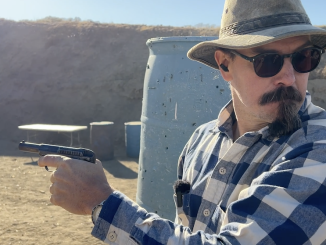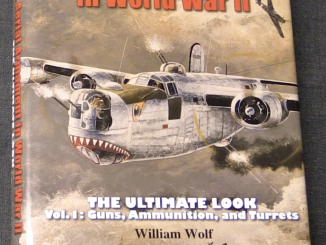One of the characteristics that often leads me to be particularly interested in a given gun is a long and convoluted history. I really enjoy finding firearms that have found their way across the world and back. One entire category of rifles that did just that were the hundreds of thousands of rifles made in the United States during WWI under contract for the British, French, Canadian, and Russian armies.
The Mosin Nagant is the most numerous example of this sort of rifle, but far from the only one. Literally millions of Model 1891 Mosin Nagants were made in the US by Westinghouse and Remington, and those rifles proceeded to find their way into countless conflicts over the past hundred years. They passed through that hands of Russian, Americans, Brits, Finns, Japanese, Chinese, Czechs, and many others. Now THAT is some cool history.
The details of these contracts and how the rifles were made has been lost for a long time, but Luke Mercaldo’s Allied Rifle Contracts in America has put that history right at our fingertips again. The details of how the contracts were awarded, how production facilities were found and adapted, how the rifles were inspected and accepted or rejected, how the US firms made or lost money, and where the rifles eventually went is all here, and not just for the Mosin Nagants. Mercaldo also covers the Belgian 1889 Mausers made by Hopkins & Allen, the Remington Rolling Blocks made for France, the Winchester 1895s made for Russia, the Remington Berthiers made for France, the Savage 1899 lever actions made for Canada, and the Pattern 1914 Enfields made for England.
This is a definite must-have book for anyone who collects these rifles, and its a pretty cool collecting niche. The work was published in 2011 and is still readily available…but this is also definitely one of those books that is unlikely to be reprinted once the first printing sells out. So if you want it, get it now:




I’ll tell the w*fe THIS is what I want Santa Louse to bring me for Christmas…
Great piece of largely-ignored history, Ian — many thanks for helping to keep it alive!
Fascinating – I’m not a big fan of a lot of modern US arms distribution programs (propping up defense contractors with high-tech giveaways) but this sounds like some actual free-market capitalism. But beyond the Mosin-Nagant… does it go back before the smokeless era? Specifically, you mentioned the French 8mm Remington Rolling Blocks from WW1 (and I just learned that the last of the 7×57 Rolling Blocks went to the Royal Navy around 1915) but the big-bore black-powder RRBs were worldwide, and I think aside from the Swedish/Norwegians they were all American made. After the recent conversation about postwar Egyptian semiautos I remembered that when I was a kid I had a stack of old (pre ’68 GCA) American Rifleman magazines, and the full-page Century Arms ad always had, down at the bottom, some decorator-grade Rolling Blocks in .43 Egyptian and .43 Spanish at what today would be insanely low prices. Ten or 15 years ago I saw an ad in Shotgun News for a handful of very well-worn Egyptian rolling blocks that had turned up at a military academy where they had been used as drill rifles for well over a century. Seems like I read (a long time ago) that the Prussians took a close look at the Remington, and at the last stage of the trials the Kaiser showed up. They handed him a rifle, he cocked it and pulled the trigger… and it misfired. He laid the gun down and walked away, so they adopted the ’71 Mauser instead. Neat story and if there’s anyplace where someone might verify that story it’s here.
Nope, it doesn’t go back to pre-smokeless time – the book is exclusively on contracts made during WWI. The rolling block chapter (and it’s a short one) is primarily on the order France placed for 100,000 “Fusil Remington modele 1914” rolling blocks in 8mm Lebel. They were used to supplement Gras 1874/14 converted rifles for use by support troops, and thus free up the modern Lebels and Berthiers for front-line use.
Speaking of free-market capitalism, one of your advertisers has a nice one in stock:
http://www.collectorsfirearms.com/remington-rolling-block-8mm-lebel-caliber-rifle-r12383/#.Uo9wEIznY5s
Drop me a line if you are ever at Collector’s; there’s a Pakistani hole-in-the-strip-mall joint not far away that Adi would approve of.
In the mid or late 60s my dad ordered an ex-Egyptian Rolling Block which we wound up hanging on the fireplace – Dad rigged two hooks from brass rod he had in a toilet bowl repair kit…The movie, Khartoum had recently been released and I’d done some reading on the conflict…IIRC Byron Farwell’s “Queen Victoria’s Little Wars”, and was fascinated by the possibility that it may have been used in the Nile River campaign or at Omdurman in 1898.
Broz